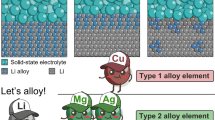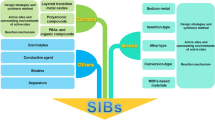Abstract
Over the past few years, lithium-ion batteries have gained widespread use owing to their remarkable characteristics of high-energy density, extended cycle life, and minimal self-discharge rate. Enhancing the exchange current density (ECD) remains a crucial challenge in achieving optimal performance of lithium-ion batteries, where it is significantly influenced the rate of electrochemical reactions at the electrodes of a battery. To enhance the ECD of lithium-ion batteries, the Taguchi method is employed in this study. The Taguchi method is a statistical approach that allows for the efficient and systematic evaluation of a large number of experimental factors. The proposed method involves varying six input factors such as positive and negative electrode thickness, separator thickness, current collector area, and the state of charge (SOC) of each electrode; five levels were assigned for each control factor to identify the optimal conditions and maximizing the ECD at the positive electrode. Also, main effect screener analysis and sensitivity analysis were conducted to confirm Taguchi analysis results. The results show that the Taguchi method is an effective approach for optimizing the exchange current density of lithium-ion batteries. This paper shows that the separator thickness followed by the positive electrode thickness play the major role in determining the lithium-ion batteries response. The main effect screener analysis and sensitivity analysis show the same effect of the chosen control factor which validate the Taguchi analysis results. By identifying the optimal conditions, it is possible to improve the performance of lithium-ion batteries and potentially extend their use in a variety of applications. As case study, lithium-ion batteries with ECD at positive electrode of 6 A/m2 is designed and simulated using COMSOL multiphasic within a frequency range of 10 mHz to 1 kHz. Electrochemical impedance spectroscopy (EIS) analysis using is carried out. As the frequency increased, the real part of the impedance of the simulated battery relative to the ground decreased because the charge transfer mechanism shifted from ionic to electronic conductivity. Additionally, the imaginary part of the impedance of the simulated battery relative to the ground decreased at higher frequencies due to a reduction in capacitive effects, with only minor inductive effects. This study opens the door widely in front of researchers and manufactures to design a lithium-ion batteries at specific exchange current density that suits specific applications in forward and direct way instead of trial and error approach.







Similar content being viewed by others
References
Siva Ramkumar M, Subba Rami Reddy C, Ramakrishnan A, Raja K, Pushpa S, Jose S, Jayakumar M (2022) Review on Li-ion battery with battery management system in electrical vehicle. Adv Mater Sci Eng 2022(3379574):8. https://doi.org/10.1155/2022/3379574
Zhang YS, Courtier NE, Zhang Z, Liu K, Bailey JJ, Boyce AM, Richardson G, Shearing PR, Kendrick E, Brett DJL (2022) A Review of Lithium-Ion Battery Electrode Drying: Mechanisms and Metrology. Adv Energy Mater 12:2102233. https://doi.org/10.1002/aenm.202102233
Zhu W, Zhang J, Luo J, Zeng C, Su H, Zhang J, Liu R, Hu E, Liu Y, Liu W-D, Chen Y, Hu W, Xu Y (2023) Ultrafast non-equilibrium synthesis of cathode materials for Li-ion batteries. Adv Mater 35:2208974. https://doi.org/10.1002/adma.202208974
Abdallah EM, Morsi MA, Asnag GM, Tarabiah AE (2022) Structural, optical, thermal, and dielectric properties of carboxymethyl cellulose/sodium alginate blend/lithium titanium oxide nanoparticles: biocomposites for lithium-ion batteries applications. Int J Energy Res 46(8):10741–10757. https://doi.org/10.1002/er.7877
Vendra CMR, Shelke AV, Buston JEH, Gill J, Howard D, Read E, Abaza A, Cooper B, Wen JX (2022) Numerical and experimental characterisation of high energy density 21700 lithium-ion battery fires. Process Saf Environ Protect 160:153–165
Zhou L, Zuo TT, Kwok CY et al (2022) High areal capacity, long cycle life 4 V ceramic all-solid-state Li-ion batteries enabled by chloride solid electrolytes. Nat Energy 7:83–93. https://doi.org/10.1038/s41560-021-00952-0
Xu J, Chen Z, Qin J, Minqiang P (2022) A lightweight and low-cost liquid-cooled thermal management solution for high energy density prismatic lithium-ion battery packs. Appl Therm Eng 203:117871. https://doi.org/10.1016/j.applthermaleng.2021.117871
Liu L, Liu C, Wang M, Li B, Wang K, Fan X, Li N, Wang H, Hu S, Diao X (2023) Low self-discharge all-solid-state electrochromic asymmetric supercapacitors at wide temperature toward efficient energy storage. Chem Eng J 456:141022. https://doi.org/10.1016/j.cej.2022.141022
Liu J, Duan Q, Qi K, Liu Y, Sun J, Wang Z, Wang Q (2022) Capacity fading mechanisms and state of health prediction of commercial lithium-ion battery in total lifespan. J Energy Storage 46:103910. https://doi.org/10.1016/j.est.2021.103910
Bates AM, Preger Y, Torres-Castro L, Harrison KL, Harris SJ, Hewson J (2022) Are solid-state batteries safer than lithium-ion batteries? Joule 6(4):742–755. https://doi.org/10.1016/j.joule.2022.02.007
Miao Y, Liu L, Zhang Y, Tan Q, Li J (2022) An overview of global power lithium-ion batteries and associated critical metal recycling. J Hazard Mater 425:127900. https://doi.org/10.1016/j.jhazmat.2021.127900
Lv C, Zhou X, Zhong L, Yan C, Srinivasan M, Seh ZW, Liu C, Pan H, Li S, Wen Y, Yan Q (2022) Machine learning: an advanced platform for materials development and state prediction in lithium-ion batteries. Adv Mater 34:2101474. https://doi.org/10.1002/adma.202101474
Sun Q, Cao Z, Ma Z, Zhang J, Wahyudi W, Liu G, Cheng H, Cai T, Xie E, Cavallo L, Li Q, Ming J (2023) Interfacial and interphasial chemistry of electrolyte components to invoke high-performance antimony anodes and non-flammable lithium-ion batteries. Adv Funct Mater 33:2210292. https://doi.org/10.1002/adfm.202210292
Jiang Y, Xu C, Xu K, Li S, Ni J, Wang Y, Liu Y, Cai J, Lai C (2022) Surface modification and structure constructing for improving the lithium ion transport properties of PVDF based solid electrolytes. Chem Eng J 442:136245. https://doi.org/10.1016/j.cej.2022.136245
Zhang C, Wang H, Wu L (2023) Life prediction model for lithium-ion battery considering fast-charging protocol. Energy 263:126109. https://doi.org/10.1016/j.energy.2022.126109
Shang W, Yu W, Xiao X, Ma Y, Chen Z, Ni M, Tan P (2022) Optimizing the charging protocol to address the self-discharge issues in rechargeable alkaline Zn-Co batteries. Appl Energy 308:118366. https://doi.org/10.1016/j.apenergy.2021.118366
Chen H, Zhang T, Zhang H, Tian G, Liu R, Yang J, Zhang Z (2022) Power parametric optimization of an electro-hydraulic integrated drive system for power-carrying vehicles based on the Taguchi method. Processes 10(5):867. https://doi.org/10.3390/pr10050867
Al Rafei T, Yousfi Steiner N, Chrenko D (2023) Genetic algorithm and Taguchi method: an approach for better Li-ion cell model parameter identification. Batteries 9(2):72. https://doi.org/10.3390/batteries9020072
Alrashdan MH (2020) MEMS piezoelectric micro power harvester physical parameter optimization, simulation, and fabrication for extremely low frequency and low vibration level applications. Microelectron J 104:104894. https://doi.org/10.1016/j.mejo.2020.104894
Alrashdan MHS, Hamzah AA, Majlis BY (2018) Power density optimization for MEMS piezoelectric micro power generator below 100 Hz applications. Microsyst Technol 24:2071–2084. https://doi.org/10.1007/s00542-017-3608-1
Alrashdan MHS, Ahmed MZ, Abu-Al-Aish A (2017) Modeling and optimization of frequency tunable piezoelectric micro power generator. Micro Nanosyst 9(2). https://doi.org/10.2174/1876402910666180118125520
Xu X, Jiao X, Kapitanova OO, Wang J, Volkov VS, Liu Y, Xiong S (2022) Diffusion limited current density: a watershed in electrodeposition of lithium metal anode. Adv Energy Mater 12:2200244. https://doi.org/10.1002/aenm.202200244
Ai W, Kirkaldy N, Jiang Y, Offer G, Wang H, Wu B (2022) A composite electrode model for lithium-ion batteries with silicon/graphite negative electrodes. J Power Sources 527:231142. https://doi.org/10.1016/j.jpowsour.2022.231142
Lu Y, Zhao C-Z, Yuan H, Cheng X-B, Huang J-Q, Zhang Q (2021) Critical current density in solid-state lithium metal batteries: mechanism, influences, and strategies. Adv Funct Mater 31:2009925. https://doi.org/10.1002/adfm.202009925
Liu Y, Xu X, Sadd M, Kapitanova OO, Krivchenko VA, Ban J, Wang J, Jiao X, Song Z, Song J, Xiong S, Matic A (2021) Insight into the critical role of exchange current density on electrodeposition behavior of lithium metal. Adv Sci 8:2003301. https://doi.org/10.1002/advs.202003301
Colclasure AM, Tanim TR, Jansen AN, Trask SE, Dunlop AR, Polzin BJ, Bloom I, Robertson D, Flores L, Evans M, Dufek EJ, Smith K (2020) Electrode scale and electrolyte transport effects on extreme fast charging of lithium-ion cells. Electrochimica Acta 337:135854. https://doi.org/10.1016/j.electacta.2020.135854
Kraft L, Habedank JB, Frank A, Rheinfeld A, Jossen A (2020) Modeling and simulation of pore morphology modifications using laser-structured graphite anodes in lithium-ion batteries. J Electrochem Soc 167(013506). https://doi.org/10.1149/2.0062001JES
Zhu Y, Xie J, Pei A et al (2019) Fast lithium growth and short circuit induced by localized-temperature hotspots in lithium batteries. Nat Commun 10:2067. https://doi.org/10.1038/s41467-019-09924-1
Wang X, Wei X, Dai H (2019) Estimation of state of health of lithium-ion batteries based on charge transfer resistance considering different temperature and state of charge. Journal of Energy Storage 21:618–631. https://doi.org/10.1016/j.est.2018.11.020
Alrashdan MHS (2019) Eigen frequency, frequency response, and transient response analysis of MEMS T-shape cantilever beam piezoelectric micro-power generator about 1 KHz. International Conference on Power Generation Systems and Renewable Energy Technologies (PGSRET) 2019:1–4
Alrashdan MH (2020) Data relating to mems piezoelectric micro power harvester physical parameter optimization, for extremely low frequency and low vibration level applications. Data Br 33:106571. https://doi.org/10.1016/j.dib.2020.106571
Alrashdan MHS, Hamzah AA, Majlis B (2014) Design and optimization of cantilever based piezoelectric micro power generator for cardiac pacemaker. Microsyst Technol 21(8):1607–1617
Pang Q, Kwok CY, Kundu D, Liang X, Nazar LF (2019) Lightweight metallic MgB2 mediates polysulfide redox and promises high-energy-density lithium-sulfur batteries. Joule 3(1):136–148. https://doi.org/10.1016/j.joule.2018.09.024
Atalay S, Sheikh M, Mariani A, Merla Y, Bower E, Widanage WD (2020) Theory of battery ageing in a lithium-ion battery: capacity fade, nonlinear ageing and lifetime prediction. J Power Sources 478:229026. https://doi.org/10.1016/j.jpowsour.2020.229026
Xu M, Reichman B, Wang X (2019) Modeling the effect of electrode thickness on the performance of lithium-ion batteries with experimental validation. Energy 186:115864. https://doi.org/10.1016/j.energy.2019.115864
Zhao Q, Wang R, Hu X, Wang Y, Lu G, Yang Z, Liu Q, Yang X, Pan F, Xu C (2022) Functionalized 12 μm polyethylene separator to realize dendrite-free lithium deposition toward highly stable lithium-metal batteries. Adv Sci 9:2102215. https://doi.org/10.1002/advs.202102215
Wang M, Li J, He X, Wu H, Wan C (2012) The effect of local current density on electrode design for lithium-ion batteries. J Power Sources 207:127–133. https://doi.org/10.1016/j.jpowsour.2011.12.063
Cheng Z, Liu M, Ganapathy S, Li C, Li Z, Zhang X, He P, Zhou H, Wagemaker M (2020) Revealing the impact of space-charge layers on the Li-ion transport in all-solid-state batteries. Joule 4(6):1311–1323. https://doi.org/10.1016/j.joule.2020.04.002
Doyle M, Fuller TF, Newman J (1993) Modeling of galvanostatic charge and discharge of the lithium/polymer/insertion cell. J Electrochem Soc 140(6). https://doi.org/10.1149/1.2221597
Al-Gabalawy M, Hosny NS, Hussien SA (2020) Lithium-ion battery modeling including degradation based on single-particle approximations. Batteries 6(3):37. https://doi.org/10.3390/batteries6030037
Ruffo R, Wessells C, Huggins RA, Cui Y (2009) Electrochemical behavior of LiCoO2 as aqueous lithium-ion battery electrodes. Electrochem Commun 11(2):247–249. https://doi.org/10.1016/j.elecom.2008.11.015
Wilson JR, Cronin JS, Barnett SA, Harris SJ (2011) Measurement of three-dimensional microstructure in a LiCoO2 positive electrode. J Power Sources 196(7):3443–3447. https://doi.org/10.1016/j.jpowsour.2010.04.066
Julien CM, Zaghib K, Mauger A, Groult H (2012) Enhanced electrochemical properties of LiFePO4 as positive electrode of Li-ion batteries for HEV application. Adv Chem Engineer Sci 2(3):321–329. https://doi.org/10.4236/aces.2012.23037
Amine K, Wang Q, Vissers DR, Zhang Z, Rossi NA, West R (2006) Novel silane compounds as electrolyte solvents for Li-ion batteries. Electrochem Commun 8(3):429–433. https://doi.org/10.1016/j.elecom.2005.12.017
Meddings N, Heinrich M, Overney F, Lee J, Ruiz V, Napolitano E, Seitz S, Hinds G, Raccichini R, Gaberšček M, Park J (2020) Application of electrochemical impedance spectroscopy to commercial Li-ion cells: a review. J Power Sources 480:228742. https://doi.org/10.1016/j.jpowsour.2020.228742
Brown S, Mellgren N, Vynnycky M, Lindbergh G (2008) Impedance as a tool for investigating aging in lithium-ion porous electrodes. II. Positive Electrode Examination. Electrochim Acta 155:A320
Abraham DP, Kawauchi S, Dees DW (2008) Modeling the impedance versus voltage characteristics of LiNi0.08Co0.15Al0.05O2. Electrochim Acta 53:2121–2129
Author information
Authors and Affiliations
Corresponding author
Additional information
Publisher's Note
Springer Nature remains neutral with regard to jurisdictional claims in published maps and institutional affiliations.
Rights and permissions
Springer Nature or its licensor (e.g. a society or other partner) holds exclusive rights to this article under a publishing agreement with the author(s) or other rightsholder(s); author self-archiving of the accepted manuscript version of this article is solely governed by the terms of such publishing agreement and applicable law.
About this article
Cite this article
Alrashdan, M.H.S. Exchange current density at the positive electrode of lithium-ion batteries optimization using the Taguchi method. J Solid State Electrochem 28, 213–227 (2024). https://doi.org/10.1007/s10008-023-05672-x
Received:
Revised:
Accepted:
Published:
Issue Date:
DOI: https://doi.org/10.1007/s10008-023-05672-x




